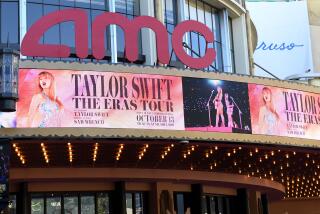Movie or TV? It’s a question as old as ‘The T.A.M.I. Show’
- Share via
What is a film? The question is not a new one. Not by a long shot.
While the question seems especially pertinent right at this moment — with ESPN debuting its 7 1/2-hour documentary “O.J.: Made In America” in theaters, doing whatever it takes to qualify the series for the Oscars, film’s greatest honor — in fact, this kind of platform fluidity is really nothing new.
In recent history, on the dramatic side of things, we have the case of 2003’s “Best of Youth.” Created for Italian television with no thought of export, a quirk of fate made the project better than it otherwise would have been.
Rank snobbery should have kept it from captivating the rarefied international film festival world, and its six-hour length should have kept it from American or Italian theatrical release. But that’s not the way things worked out.
I said to them, ‘If it plays on a screen and you can sell popcorn, it’s a movie.’
— “The T.A.M.I. Show” producer Bill Sargent
A managerial crisis at RAI, Italy’s national broadcasting company and the film’s production entity, freed director Marco Tullio Giordana from the at-times stifling oversight of cultural bureaucrats. He was left alone to make his film. An Italian scout for Cannes tipped the festival off to “Best of Youth’s” qualities and it showed up out of nowhere in the Un Certain Regard section.
FULL COVERAGE: The blur between movies and television
The emotional impact the film had on proverbially hard-bitten Cannes audiences was palpable: People seated near me were literally reduced to tears. Adding surprise to surprise, “Best of Youth” took home Un Certain Regard’s top prize. The New York and Telluride film festivals took notice, as did theatrical distributors in Italy, where the film did remarkably well on the big screen before finally appearing on television (in four 90-minute installments) considerably later than anyone anticipated.
Going back even further, there is the case of 1964’s “The T.A.M.I Show,” short for Teen Age Music International, the filmed record of a once-in-a-lifetime concert at the Santa Monica Civic that was released into theaters by American International Pictures.
On the bill, among others, were Chuck Berry, Diana Ross and the Supremes, Smokey Robinson and the Miracles, Marvin Gaye, the Beach Boys, the Rolling Stones and, in a truly classic performance, James Brown and the Famous Flames. You would think theater owners would be clamoring to show this film, but, producer Bill Sargent told me years later during a re-release tour for the film (recorded in an early high-definition process called Electronovision), this was not the case.
“People said to me, ‘It’s not a film, it’s a concert,’” Sargent recounted, still irked. “I said to them, ‘If it plays on a screen and you can sell popcorn, it’s a movie.’”
The august National Film Registry agreed with Sargent, including “The T.A.M.I. Show” for its prestigious preservation project in 2006, and I do too. If something is booked into a movie theater, I consider it a film, no questions asked, and definitions and classifications be hanged.
Because if you truly love the moving image, as far as I’m concerned there is no film you’d want to see anywhere but inside a movie theater. Even the smallest, most intimate dramas – maybe especially the smallest, most intimate dramas – benefit enormously from the sense of shared emotional experience that nothing but being in a large dark space with an empathetic crowd can provide.
MORE:
Is ‘O.J.: Made in America’ a TV show or a movie?
Five films that were faced with the theatrical/streaming choice
To stream or not to stream: Filmmakers face a tough choice on getting their films to audiences
On Twitter: @kennethturan
More to Read
Only good movies
Get the Indie Focus newsletter, Mark Olsen's weekly guide to the world of cinema.
You may occasionally receive promotional content from the Los Angeles Times.











